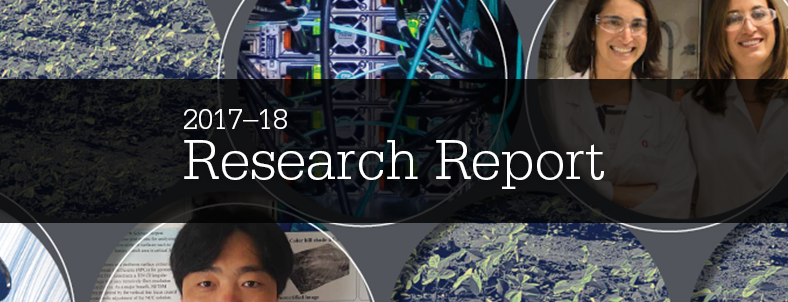What if you discovered your favorite song, or your favorite work of art, came straight out of a computer? It is possible future generations will experience exactly that.
Andrew Plummer, Ph.D., recently supervised a classroom project at The Ohio State University that explored how artificial neural networks could potentially produce music. As part of the project, students experienced the benefits of high performance computing through the Ohio Supercomputer Center to complete the computationally intensive research.
Neural networks are computing systems inspired by biological neural structures and built to perform similar tasks. Not only have they shown the ability to learn and observe, but also to create.
For instance, by taking images or doodles in a data set, researchers have trained neural networks to create complex pieces of original art. Other projects have used audio files to produce music.
Plummer, senior lecturer/research engineer in Ohio State’s Department of Computer Science and Engineering, teaches a course in which students are given the freedom to develop projects of interest to them. In this particular one, students investigated a project by Stanford University researchers called GRUV that uses raw audio waveforms as seed sequences to train long short-term memory (LSTM) neural networks. Theoretically, these networks could create new songs from the seed sequences.
“It’s a hot topic right now, being able to do generation not just with music but with stories, narratives or images,” Plummer said. “A lot of research teams are looking at this from a high level, my students wanted to figure out the nuts and bolts of what actually goes into building these systems.”
The classroom project had three objectives in order to improve on the limitations of GRUV’s overall creative output:
- Taking GRUV and observing what can be achieved from various sets of training data
- Attempting to improve the seed generation process
- Using a generative adversarial network model involving a variant of GRUV’s LSTM network to see if the quality of musical output could be improved.
Plummer’s students built their adversarial network using Python’s TensorFlow software on OSC’s Owens and Oakley clusters.
“It’s very computationally intensive,” Plummer said. “The students were initially building the models on their own computers and they weren’t sufficient for quick prototyping and experimentation on the system design. OSC was very valuable for them to have those resources and do quicker experimentation to get them up and running.”
Project Lead: Andrew Plummer, Ph.D., The Ohio State University
Research Title: NUGRUV: Using and improving the GRUV Project for music generation
Funding Source: The Ohio State University
Website: arplummer.info

